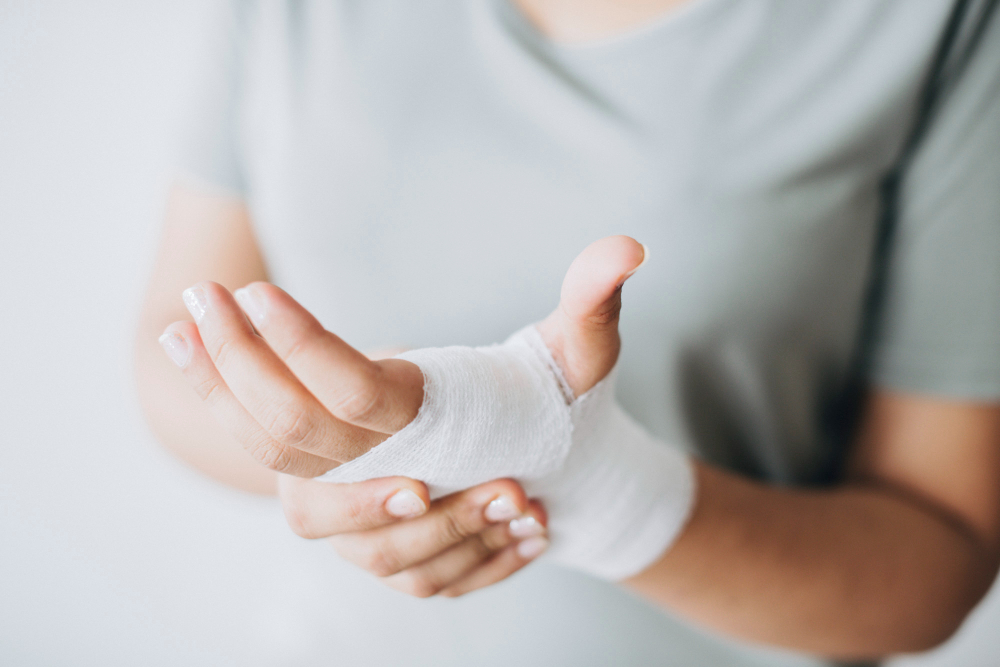Imagine your skin being pulled off like a glove from your hand or another body part. This severe type of injury is known as a degloved injury. It usually happens when the skin gets forcefully separated from the underlying tissue, often due to accidents, such as car crashes or machinery mishaps.
This post aims to explain what degloving injuries are and their causes. In addition, we will also give you the possible treatments to help those who are affected by this traumatic condition and the possibility of taking legal action for it.
What Is a Degloved Injury?
According to the National Institute of Health, a degloved injury happens when a body part’s top skin layers and tissue are forcefully pulled away from the muscles, tissues, or bones underneath.
These injuries usually occur in the legs and often occur alongside broken bones. As a matter of fact, they can be very dangerous because they cause heavy bleeding and tissue damage that leads to putting lives at risk.
What Are the Types of Degloved Injury?
There are two main kinds of degloving injuries that you need to discover as explained below.
1. Open Degloving
Open degloving injuries are usually more visible and shocking. They occur when a part of your skin and tissue is forcefully torn away, exposing your muscles, tendons, connective tissue, and sometimes bones.
In addition, your skin might completely detach from your body or hang on partially like a flap. These injuries can occur anywhere on your body, but they’re most commonly seen on the legs, torso, and scalp.
2. Closed Degloving
Closed degloving injuries are harder to notice than open ones since they’re not as obvious. Moreover, they occur inside the body when skin and fat get separated from deep muscles and tissue. The outer skin doesn’t often look severely damaged; instead, there might just be some bruising.
These injuries create spaces under the skin that can fill with blood and other fluids, and make the skin look swollen. Consequently, sometimes, you might not see these injuries until the skin changes color. They usually happen near the top of the hipbone or, less often, on other body parts like the torso, buttocks, spine, shoulders, or knees.
What Are the Signs and Symptoms?
The signs you experience will vary based on whether your injury is closed or open and how serious it is. Typical symptoms of an open degloved injury are:
- intense pain;
- deep cuts or open wounds;
- exposed bones, muscles, tendons, nerves, or tissue underneath;
- heavy bleeding; and
- skin being fully or partially separated.
Meanwhile, symptoms of a closed degloved injury include:
- pain;
- bruising and changes in skin color;
- swelling;
- sensitivity or soreness; and
- dry, cracked skin.
The Complications
Degloving injuries are extremely serious and can easily get infected because they’re deep wounds. Thus, it’s crucial to get immediate medical help to thoroughly clean the wound and reduce the chance of infection. As you heal, inform your doctor if you notice or suffer from the symptoms below:
- red edges around the wound;
- swelling in the wound area;
- leaking from the wound, especially if its color is yellow or has a bad smell;
- having a fever; and
- suffering in terrible pain.
Please note that while it might be less visible than the open type if close degloving injuries are left untreated, they can cause severe tissue death.
What Are the Causes?
A degloved injury usually happens due to accidents with machines on farms or in industries, but they can also be caused by the following factors and conditions:
- motorcycle crashes;
- car crashes;
- sports accidents;
- bites from animals;
- falling from high places; and
- construction accidents.
How to Diagnose Degloved Injury?
Doctors usually diagnose a degloving injury by looking at how the injury appears and how it happened. It’s important to figure out how bad the injury is and check if there are any broken bones or issues with blood vessels because these conditions require advanced treatment, like urgent surgery.
They also check if the skin looks healthy by looking at factors like skin color changes, numbness skin sensation, or unusual skin temperature. Doctors might also check for tenderness and swelling in the area.
Sometimes, they might need more tests like removing fluid using a needle, doing ultrasounds, CT scans, or MRIs. As a result, they can confirm how severe the injury is and how far it spreads.
Degloving Injuries Treatments
Basically, treatment for degloving injuries depends on how severe they are, where they are located, and what type they are. For less serious injuries, doctors might use compression bandages or even remove fluid with a needle.
Most of the time, surgery is needed for degloving injuries. The surgeon might do various medical treatments to treat the wound. It ranges from using a special device to help the wound heal, cleaning out dead tissue, reattaching the removed skin if possible, or restoring blood flow to the area.
In some cases, the surgeon may use the skin from another part of your body to replace what was injured or damaged. Sometimes, antibiotics or a blood transfusion are necessary to prevent infection or deal with severe blood loss. If the damage is severe and the tissue doesn’t properly respond, amputation might be necessary.
After surgery, recovery can take a long time. It’s essential to follow the doctor’s instructions for caring for the wound and attending follow-up appointments to ensure proper healing and prevent complications.
Can You Take Legal Action for a Degloving Injury?
Absolutely, you have the right to sue for a degloved injury, especially if someone else’s negligence caused them. For instance, if a malfunctioning machine at work leads to your degloved injury, you can take legal action against your employer.
According to Janicek Law page, you need to prove four points below in order to build a strong case due to injuries, including the degloving injury:
- duty of care;
- deviation from the mentioned duty;
- direct cause; and
- damage.
What Are Significant Points Regarding Degloved Injury?
It’s really important to know how serious degloved injuries can be. Whether it happens at work, on the road, or due to someone else’s negligence, these injuries can have a big effect on your life.
Thus, prevention and staying careful can really help deal with the difficulties that come with this kind of injury. Otherwise, if the degloved injury happens to you due to someone else’s carelessness, you can consult with a legal advisor to decide if it’s possible to take legal action or settlement.



